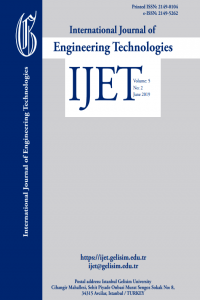A paradigm change in road safety evaluation: from hypothetico-deductive testing to designing safety systems
___
- Abernathy, W. & Utterback, J., 1978. Patterns of Industrial Innovation. Technology Review, pp. 40-47.
- euroFOT, 2012. www.eurofot-ip.eu. [Online].
- FESTA Consortium, 2008. FESTA Handbook, s.l.: FESTA.
- Hervé, V., Fricheteau, R. (2011). Etat de l’art sur les véhicules électriques et hybrides, Confidential Report, LAB – CEESAR.
- Fricheteau, R., 2011. Cadrage général pour une évaluation des performances des actions de sécurité routière, s.l.: s.n.
- Got, C., 2011. http://www.securite-routiere.org/. [Online].
- Hatchuel, A. & Weil, B., 2002. La théorie C-K : Fondements et usages d’une théorie unifiée de la conception,
- Kircher,K. (2008) A comprehensive framework of performance indicators and their interaction, FESTA Support Action Field operational test support Action, deliverable D2.1. LAB, 2011. Rapport annuel, s.l.: s.n.
- Labrousse, M., Hermitte, T., Hervé, V., Bertholon, N., Guillaume, A. (2011) Avolution of front car occupants injuries in frontal impacts considering the improvements of passive safety technologies, 13th European Automotive Congress, EAEC 2011, June 2011, Valencia, Spain.
- Le Masson, P., Weil, B. & Hatchuel, A., 2006. Les processus d'innovation - Conception innovante et croissance des entreprises. Paris: Hermès.
- Ledon, C., Roynard, M., Simon, MC., Phan, V. (2011) Les systèmes d’alerte et d’assistance de sorties de voie embarqués sur les véhicules, Projet ROADSENSE.
- Mock, P., Hülsebusch, D. et al. (2009), Electric vehicles - A model based assessment of future market prospects and environmental impacts, International Electric Vehicle Symposium and Exposition (EVS), Stavanger, Norway.
- Michigan University, 2012.
- www.umtri.umich.edu/divisionPage.php?pageID=294. [Online].
- Paget, 2012. Vers de nouvelles méthodes d'évaluation en accidentologie, s.l.: s.n.
- Peden, M., Hyder, A., Scurfield, R., Mohan, D., Jarawen, E., Sleet, D. and Mathers, C.,(2004). Rapport mondial sur la prévention des traumatismes dus aux accidents de la circulation, Organisation mondiale de la santé, Genève.
- Wiener, N., 1948. Cybernetics, or Control and Communication in the Animal and the Machine. Cambridge, Mass.: MIT Press.
- World Health Organization, 2004. World report on trauma prevention, s.l.: s.n.
- ISSN: 2149-0104
- Başlangıç: 2015
- Yayıncı: İstanbul Gelişim Üniversitesi
Kenneth OKEDU, Roland UHUNMWANGHO, Ngang BASSEY
Rıfat YANAROCAK, Abdülkadir ÇEKİÇ
